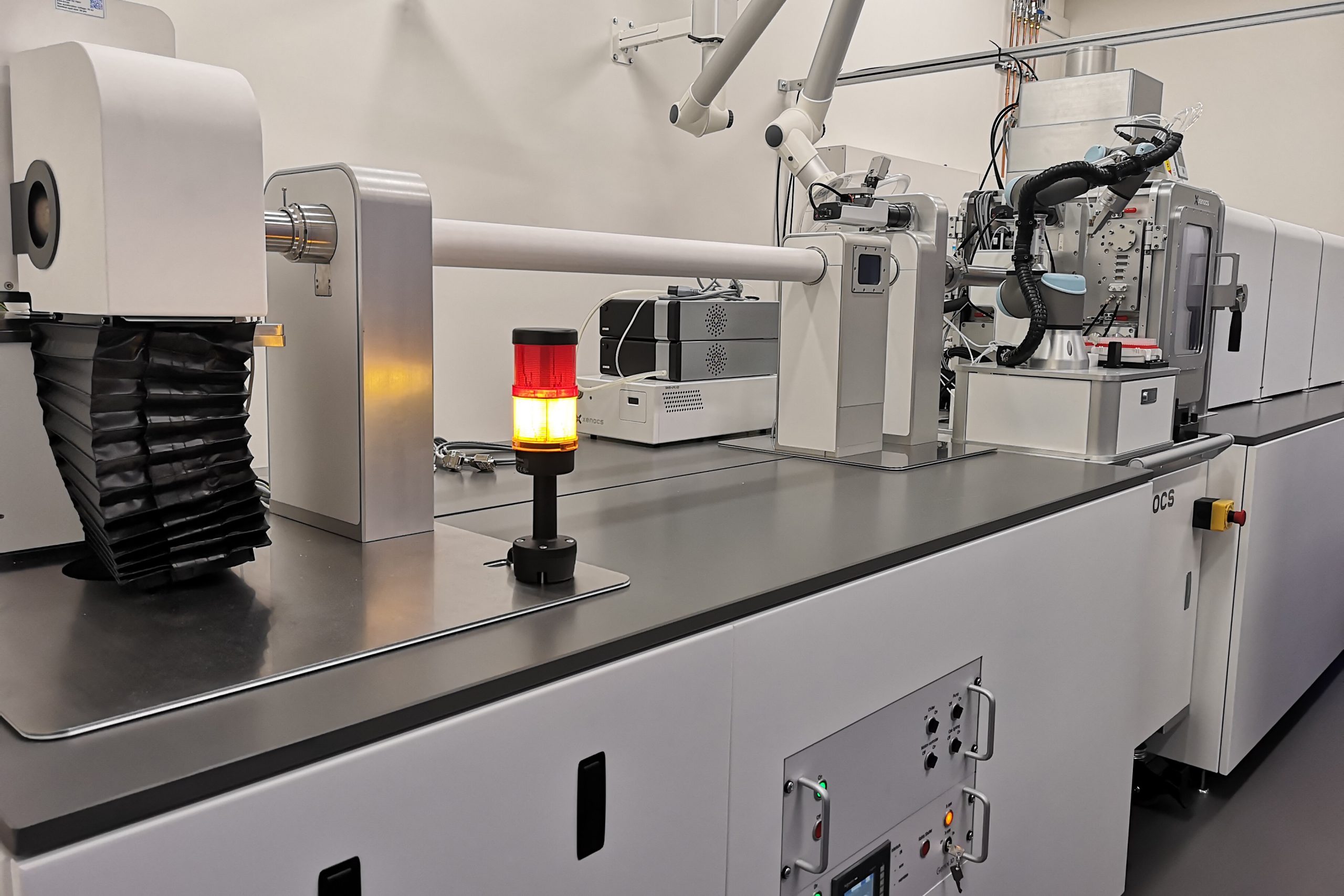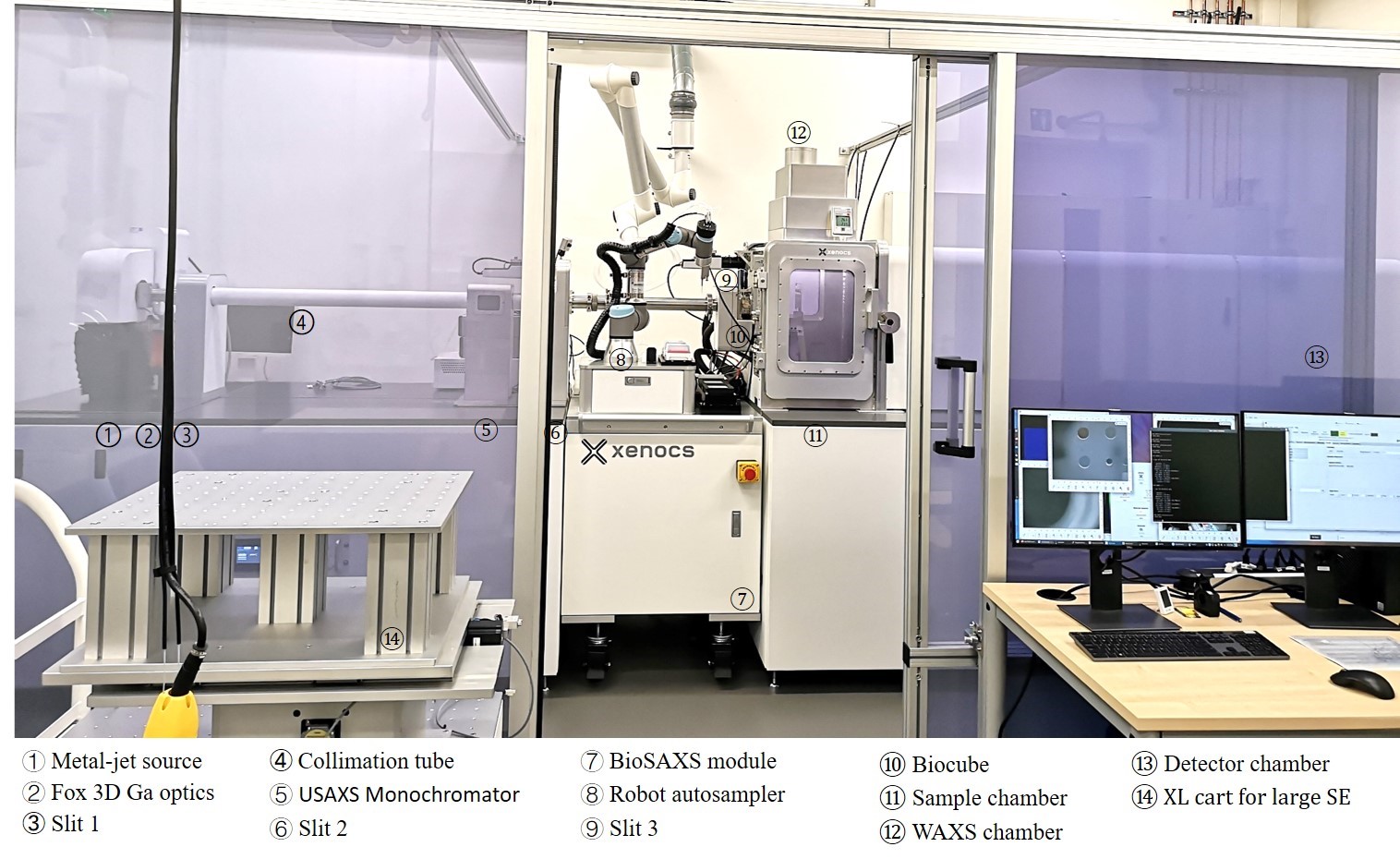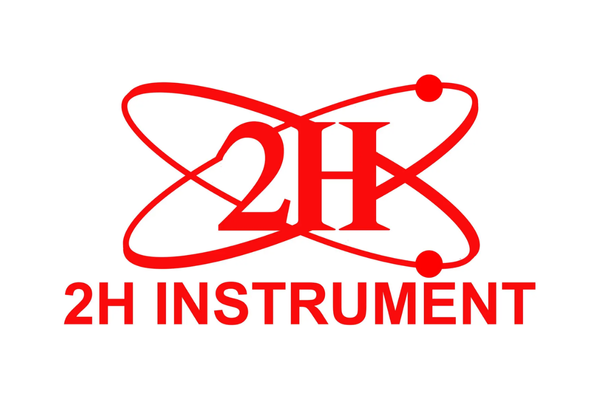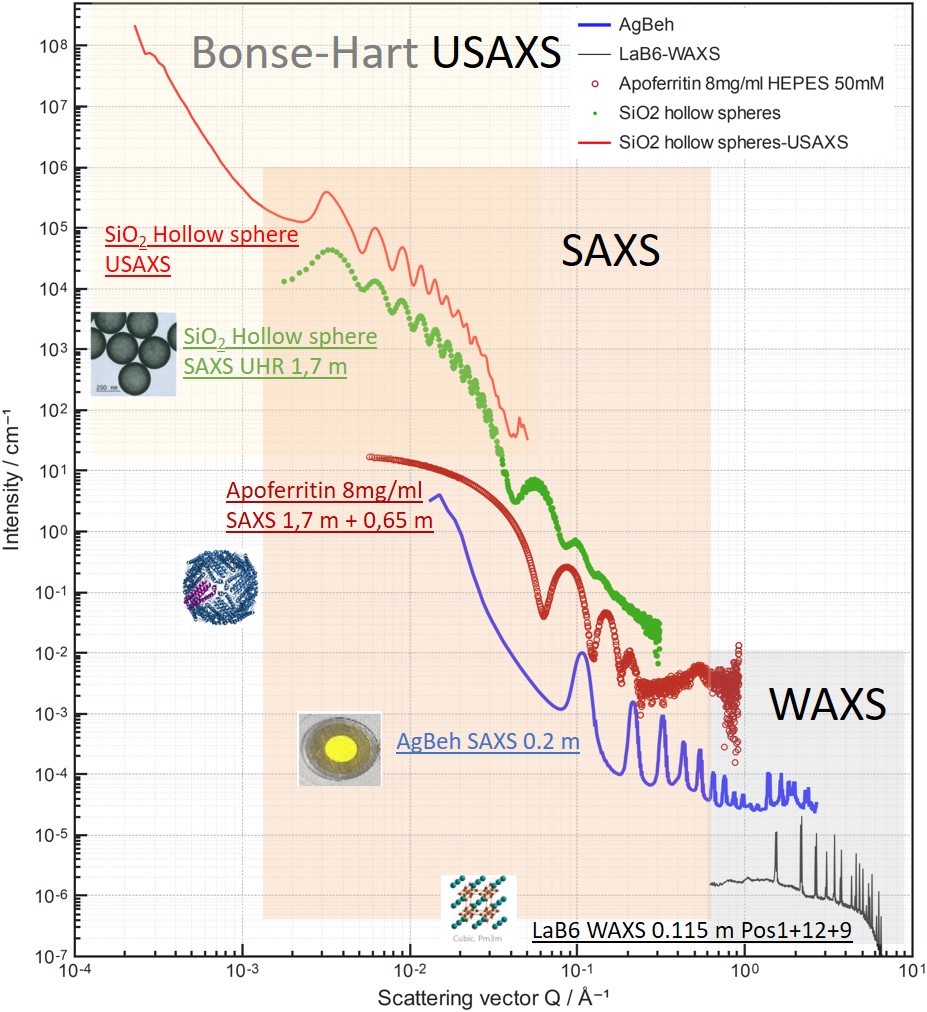
The new customized SAXS/WAXS instrument from XENOCS has been installed in the JCNS X-ray laboratory since the end of 2021.
As one of the most powerful in-house SAXS instruments in the world, it will provide powerfully complementary experimental approaches to our SANS as well as other neutron instruments.
As a young member of our small-angle scattering instruments using X-ray as the beam, KWS-X is equipped with a high flux metal-jet source and a moveable Eiger 2R 4M SAXS detector. With an additional 4-axis motorized WAXS detector and Bonse-Hart USAXS, the scattering vector q can cover a wide area from 0.0002 to 7 Å-1. Compared to other instruments, it also comprises a large sample environment station that can be used with ambient pressure conditions. Many sample environmental accessories make it possible to perform experiments at temperatures from -150 °C to 1000 °C, under shear, tensile, etc.
 | |
 © MLZ |  © MLZ |
 © MLZ |  © MLZ |
 © MLZ |  |
 © MLZ | |
 © MLZ | |
 © MLZ | |
| |
Technical Data
X-ray source:
• Excillum’s MetalJet D2+ • Ga anode 250W 70kV 3,57 mA 20×80 μm • Flux:
- 2.45×109 ph/s @ Full beam model;
- 6.16×10^8 ph/s @ High Flux (HF) model;
- 8.09×107 ph/s @ High Resolution (HR);
- 1.77×10^6 ph/s @ Ultra High Resolution (UHR)
Optics and Collimation:
• FOX 3D Galium multilayer optics
• Slightly focusing optics
• Four motorized independent blades per set of slits (S1, S2 and S3)
• S1 + S3: Collimation length> 1.9 m (Sample chamber or BioCUBE)
• S1 + S2: Collimation length> 1.3 m (XL position)
SAXS Detector: Dectris Eiger2R 4M:
• Pixel Size: 75× 75 µm2
• 4,5 Million pixels
• Sensitive Area: 155×163 [mm2]
• Modules (W x H): 2×4
• Count-rate capability: 107 ph/s/pixel
• Q-Xoom: in-vacuum moving detector
• Sample to detector distance > 1.8 m
WAXS Detector: Dectris Eiger2R 500K:
• Pixel Size: 75 × 75 µm2
• 4-axis motorized WAXS for simultaneous 2D WAXS measurements
BONSE–HART USAXS:
• Monochromator: 2-bounce Bartels Si(111)
• Analyzer: 4-bounce Si(111) channel cut crystals
Features
Wide Q range:
• SAXS: 0.0015 Å-1 < q < 5 Å-1
• USAXS: qmin < 0.0002 Å-1
• WAXS: qmax > 7 Å-1
High flux and lower background level:
• Possible for time-resolved experiments in second level
Three main measurement positions with maximum flexibility:
• Sample chamber, BioCUBE and XL position
• Measurements in both vacuum and air
• Modular conversion of various settings From standard position in chamber to BIOSAXS to XL large sample environment
• Plenty of space for large sample environment.
In-line sample visualization:
• 2xCCTV in-line camera + 3 overview camera + 1 endoscope
• Machine vision technology
Sample Environment and Add-ons
Standard sample holders:
• 27 positions 1.5 mm capillary holder
• 25 positions Solids sample holder
• 15 positions powder/gel sample holder
• 8 positions powder/gel capsule sample holder (0.5 mm and 1 mm spacer)
Temperature controlled sample holders:
• Multi-purpose X-Ray Temperature Stage (-30 – +150°C)
• Multirefillable capillary holder with temperature control (-10°C to +80°C)
• Linkam temperature sample stage MFS350 (capillaries & flat cells, -150 to +350°C)
• Linkam Extended high temperature sample stage (RT to 1000°C)
Flow cells:
• Low Noise flow cell (SiN windows)
• Glass capllary flow cell (ID from 1 mm to 2.5mm)
• Polyconbonate capllary flow cells (ID 2 mm)
• BioCUBE flow cell Assembly & cleaning pump system & HPLC connection
Shear and Rheo-SAXS:
• Linkam Shear Cell System (ambient to 350°C)
• Anton paar Rheometer- Polyconbonate double cylinder shearing system
Tensile:
• Linkam Modular Force Stage
Add-ons:
• Standard and advanced GISAXS module
• BioXolver and Cart for sample loading robot
• In-line UV/Vis spectrometer for BioCUBE
• Linkam T96 controller and Lquid Nitrogen pump
• XL Large sample environment station, capacity > 100 kg
• Additional rotation capability for the XL- XZ table
• Metrohm Trtrtion system and reaction cell, pH-counter ion control system
• mT Jumping and stopped flow/ UV-Vis/ Fluorescence
• Permanent magnet (Halbach) arrays
• SEC–SAXS
More sample environments from our neutron instrument can be shared with our neutron sample environments. Users can also bring their own sample environment.
Applications
Life and medical science:
• Structure and interactions of protein, nucleic acid
• In-situ monitoring of protein conformational changes, protein aggregation
• Characterizing monoclonal antibody-protein antigen interactions
• Hierarchical structures of biomaterials, e.g. collagen, chitosan
• Drug delivery systems based on nanoparticles, vesicles or liposomes
Polymer and soft matter:
• Structure of polymers, colloids, hydrogels, surfactants and micellers
• In-situ crystallisation of semi-crystalline polymer
• Determine the phase of self-assembled block-copolymers or liquid crystalline polymers
• Test the tensile properties of polymer or follow the degree of crystallinity
• Microemulsions, complex fluids …
• Colloids, nanocomposites, polymer gels …
Material science:
• Structure of fibre, membranes, thin films and nanocomsposites …
• Aerogels, silica foams, coating
• Micro and mesoporous materials, cements, metal and alloys
• Crystal formation during perovskite deposition and other energy materials
Food science:
• Monitor the size, shape and stability of fat globules in dairy upon aging, drying and digestion
• Crystalline fraction and lamellar structure in starchy
• Structure and size of polysaccharides and proteins in hydrated systems
• Oleo-gelator network
Source: Baohu Wu (JCNS)
https://mlz-garching.de/englisch/instruments-und-labs/user-labs/saxs-lab.html

